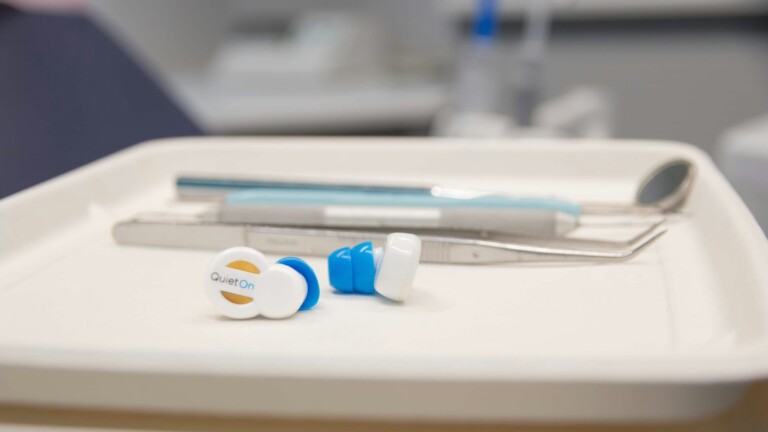Noise-induced hearing loss can and should be prevented in dental work. Hearing loss is an underestimated threat to dental professionals. Consider options during Better Hearing and Speech Month.
It is common to pay great attention to the quality of tools in dental care to foster a patient’s dental health. Yet, according to RDH Magazine, one of the most important instruments for dentists—and certainly an integral part of their wellbeing that is often neglected—is hearing.
When dentists, dental assistants and hygienists operate with high-speed handpieces, suction and ultrasonic scalers, decibel (dB) levels below and above 85 can be expected. Because these loud bursts are often periodically short, hearing protection is not mandated by the Occupational Safety and Health Administration (OSHA). Thus, covering the ears might not even cross a dental professional’s mind.
When exposure to harmful noises occur each day, all week, for an average career of 35 years, injurious effects accumulate. Symptoms such as difficulties in understanding everyday conversations, trouble perceiving background noise, mistakenly hearing people mumble or misperceive their speech, gradually increase over time.
In this perspective noise-induced hearing loss (NIHL) is an insidious and a tragic prospect for the dental professionals. If hearing protection continues getting neglected, more and more people in the field of dental healthcare are expected to join the ranks of ten million Americans affected by NIHL – a number, which could be reduced significantly by wearing appropriate hearing protection.
How can hearing protection for dental teams help prevent noise-induced hearing loss?
There are roughly three ways to prevent NIHL with hearing protection devices (HPDs): passive solutions, HPDs with hear-through and highly optimized active noise canceling (ANC) solutions. Using simple passive earplugs in dental work is a significantly better situation than not protecting the hearing at all. While passive noise control attenuates loud sounds, it sets challenges to the verbal interaction between doctors and patients. Fine-tuned ANC devices let the dental professional protect hearing all without significantly hindering communications and their personal connections with patients.
- Passive solutions such as earplugs with varying shapes, sizes and materials, are the most common way to reduce damaging noise levels. However, the passive approach is not the preferred one, when taking into consideration the details of dental work. Communication with patients is a crucial part of the dentist’s job. Even though passive solutions protect from loud noises, they also tend to muffle speech to the extent of making communication between dentist and patient challenging or impossible.
2. Hear-through devices such as over-ear HPDs work in two ways. While attenuating loud sounds, the microphones outside the headphones allow external sounds to be played through at desired volume. Devices like these may serve as a hearing protector while allowing conversations. However, there are cons. They do not focus on frequencies that occur in dental procedures, and the hard-limiting noise reduction creates an unnatural soundscape that is fatiguing to listen to for long periods of time.
3. Active Noise Cancelling devices, such as electronic earplugs, are another story. The electronics in these devices record the ambient noise, phase-shift it to perfect 180°, and combine the out-of-phase sound with the original noise to effectively cancel it out. The benefit with ANC is optimization. For example, there are devices in the market which are tuned to tackle low-end noises whose absence improves well being at work. Such solutions protect the hearing of dental professionals and allow conversations with patients to run freely.
Learn more about the QuietOn Hearing Protection Device here.


